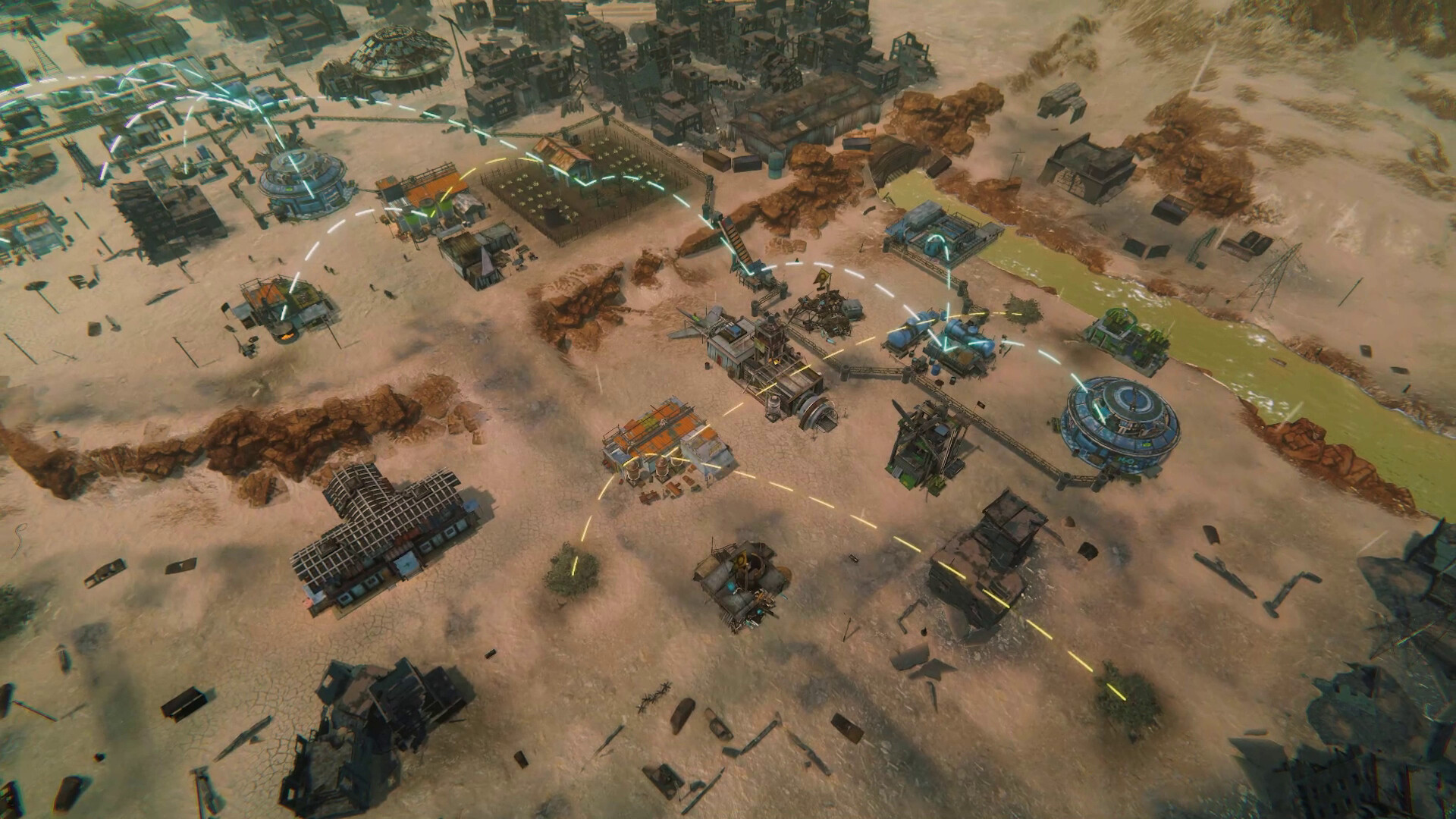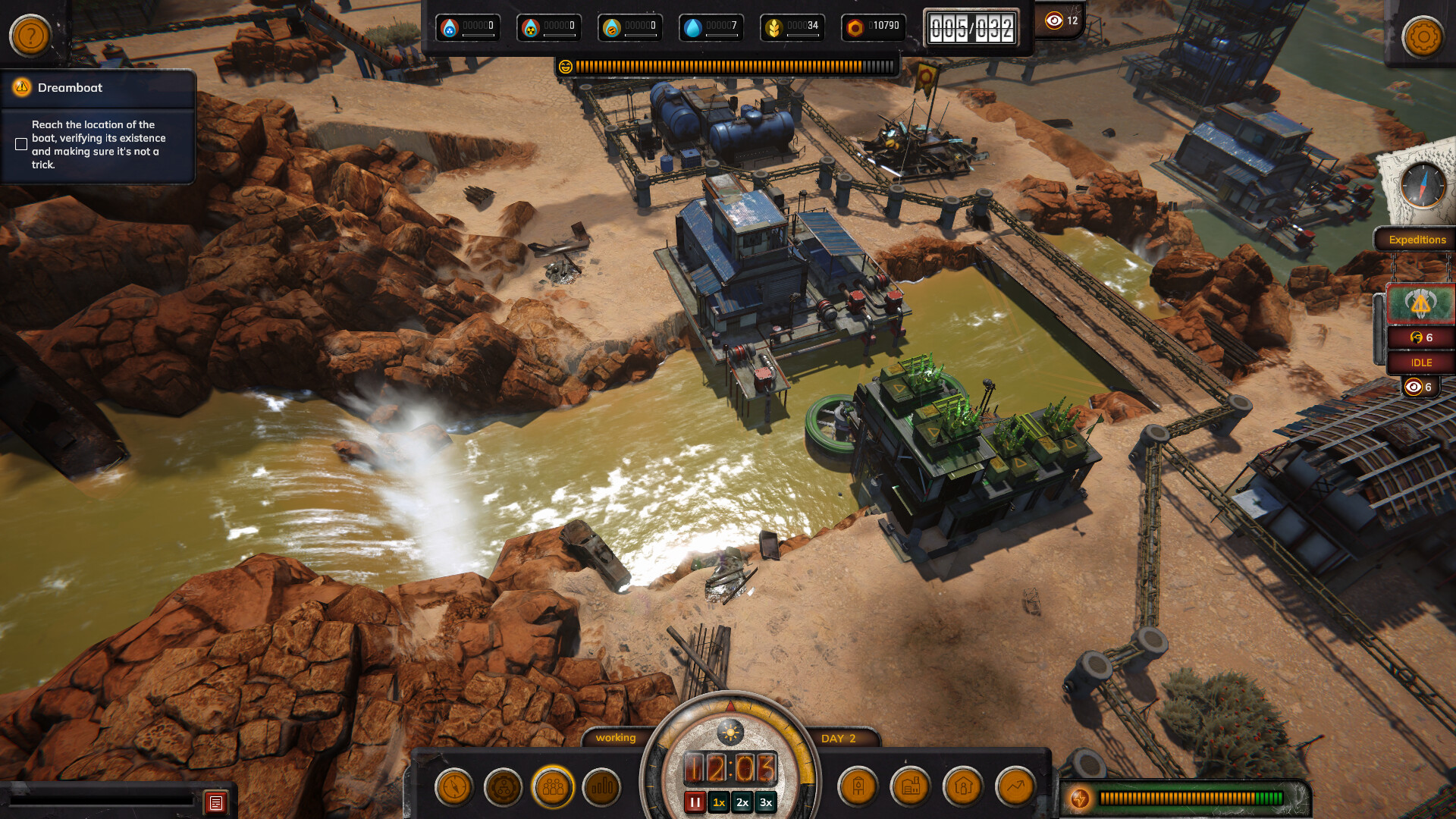
‘Homeseek’ is a post-apocalyptic survival strategy game created by Traptics and published by The Iterative Collective. In Homeseek, the world has been destroyed by overpopulation, exploitation of the environment, and disregard for natural resources such as water, which is now worth more than gold. It is up to the player to keep a group of survivors alive, rebuild a settlement for them to call home, and live off the land.
Every choice you make may impact the life or death of the settlers you are taking care of. Regardless of whether you’re welcoming outsiders that may turn on you or putting off building or researching important structures, you need to constantly keep an eye on the people’s stats, focusing on the sick or injured, or who are just straight-up upset, as it will all impact the camp.
Like many strategy games, your point of view will be looking down on the land, and you will need to place and plot structures for the settlers to build. Certain buildings, such as water plants, will also need a storage unit built and linked to it, and this will allow you to store the resource, at the storage units. You are able to assign which ones allow residents to use for food and water and which to keep as a bank to only open up when times are getting tough and they need emergency relief.
Other buildings, such as houses, provide cover during storms, offer a place for settlers to rest up after work, and provide accommodation as more settlers join the ranks wanting better living conditions. You can also invest in medical centers to treat injuries and illnesses caused by harsh environments.

As you gather more resources, you can build more to expand the knowledge of the settlers, increase the number of building options, lower the cost of building and how many resources can be gathered in a shorter time. You will need scrap to unlock more in the building tree, though each area I was able to try out had at least five scrap mines to send survivors to. Think of scrap as wood in any other RTS game, and water would be gold. You need both to build and keep things rolling smoothly.
Another way to unlock more buildings and features is by sending out people to explore from the expedition center as they can be sent to locations to either find more resources and people to join the rank with, you will need to manage how much resources they take with them as they do need to eat and drink on the go if you are running short on supplies at home base after a expedition it would not hurt to bring the team back home until you can regather supplies again.
As you play there will be random events that happen other strangers coming to camp looking for shelter, weather events such as rainfall, heat waves or dust storms each coming with either pros or cons to the event for example in the heatwaves you will need to have more access to water available to avoid residents getting sick and passing away, the events that can happen during the expeditions can be simple to resolve topics like coming searching abandoned areas or how to interact when coming across people on the travels.
Homeseek starts with an amazing cinematic and an old man describing the events leading up to now. All hope is left with the youth, as they still have the strength to harvest and explore. During gameplay, the graphics continue to look amazing, with ramshackle buildings and impressive environments, but it feels a little empty as you’re unable to interact with the settlers and there are limited sound effects.

There is a bit of background music which helps to relieve the emptiness a little, but the lack of sounds from the settlers is quite unnerving. Sadly, the settlers don’t seem to have any stand-out features as you are unable to see a breakdown on a set person to see if they would fair better collecting scrap or being sent off an expedition. There is nothing that really sets the settlers apart other than numbers to throw into marking for resources.
The difficulty can depend on the players’ style of games, I myself don’t play these types of games often so it took me some time to adjust and learn how it all worked. In saying that, when I started to understand it I found it quite fun to play while also stressful trying to keep on top of trying to keep 40+ people healthy and fed. I did like that the game changes with each environment from the barren wasteland to the seaside where the addition of saltwater and the use of desalination plants to make it safe for drinking is added.
The new weather events that come with the change of environment also make it more dynamic. For those that want to challenge their friends to see who is the ultimate survivor, there is a multiplayer mode where you compete against each other to see who can last longer in this doomed world.
Multiplayer can support up to 8 players with a new rule set and the way the game plays, with the first major addition being Doomsday Clock. Sadly, there seems to be no way to extend the clock, so when the time runs out, the game ends, and whichever player has more settlers alive at the end is declared the winner. Another way the game ends is if all players lose their settlers, so the last man standing wins.

In terms of player interaction, you will only come across other players while you’re exploring, and any actions related to the encounter will be assigned randomly between players, which means there is no host advantage or anything here.
In-game events will happen simultaneously for all players, and no one will be able to change the speed of gameplay. Instead, it’s set to a default speed for all players. You can also keep an eye on other players’ progress in the top left, as it displays their name and the remaining settler count. The multiplayer ran very smoothly, with no lag or delay for either player when we were testing it out. We even jumped across the range of levels to see how it would handle during an online situation.
In conclusion, Homeseek offers a great challenge for players with demanding attention to detail needed on management options to keep the base stocked and ready for whatever the world throws at you. While this was a game I am not used to, the learning curve was fairly high and I did fail many times by not noticing how something worked.
I found myself redoing the levels again to see if I could get a better result and see improvement in my understanding of how things ran. Be aware that it is not easy to pick up and play base-building games. It will demand time to fully understand how it plays and works.

The Good
- World events to add new twists
- Challenging gameplay
- Amazing cutscene at the start
- Nice building upgrade features
- Has Multiplayer
The Bad
- No settler details for better assigned roles
- Audiowise quite empty while playing
- Could use a more detailed training segment








